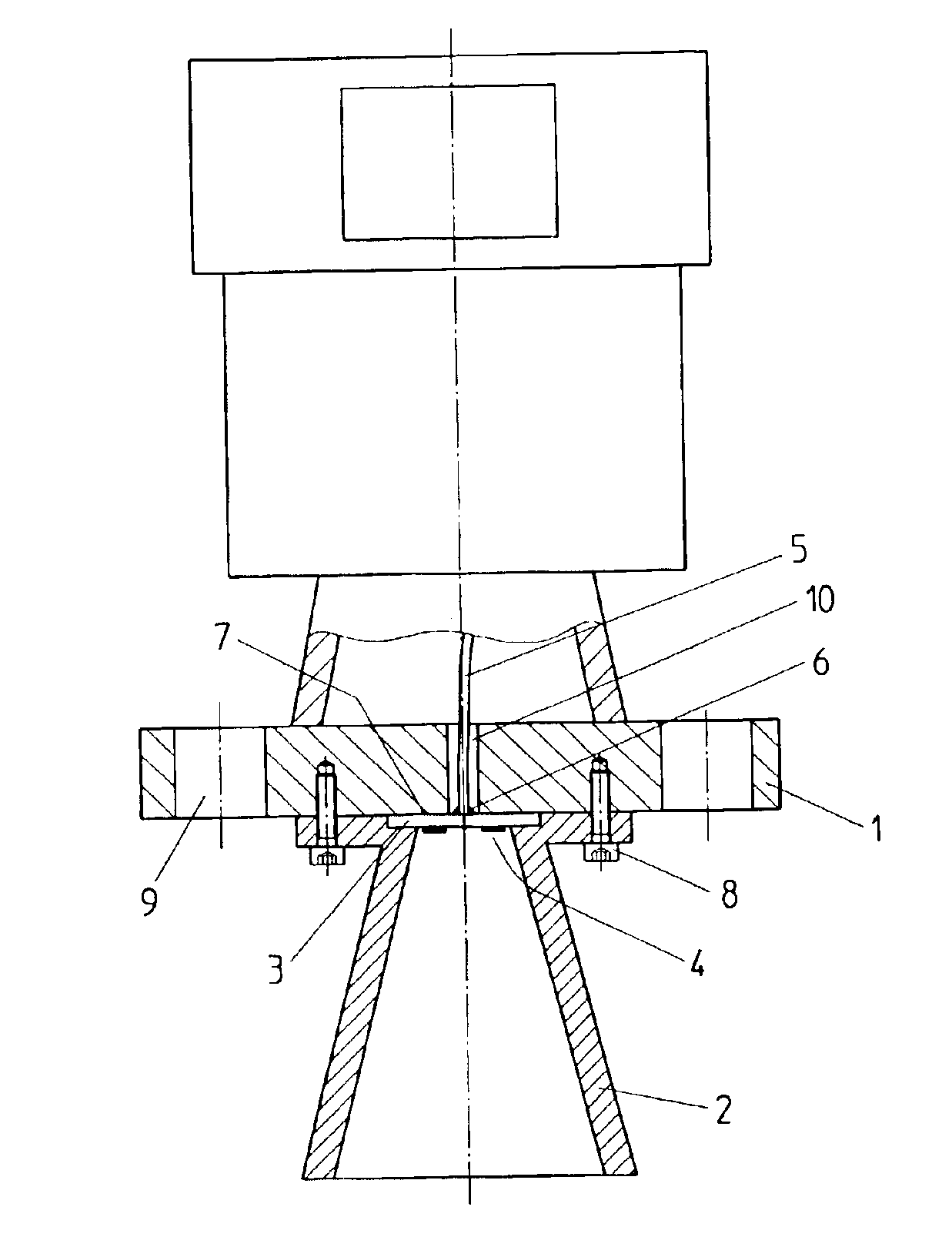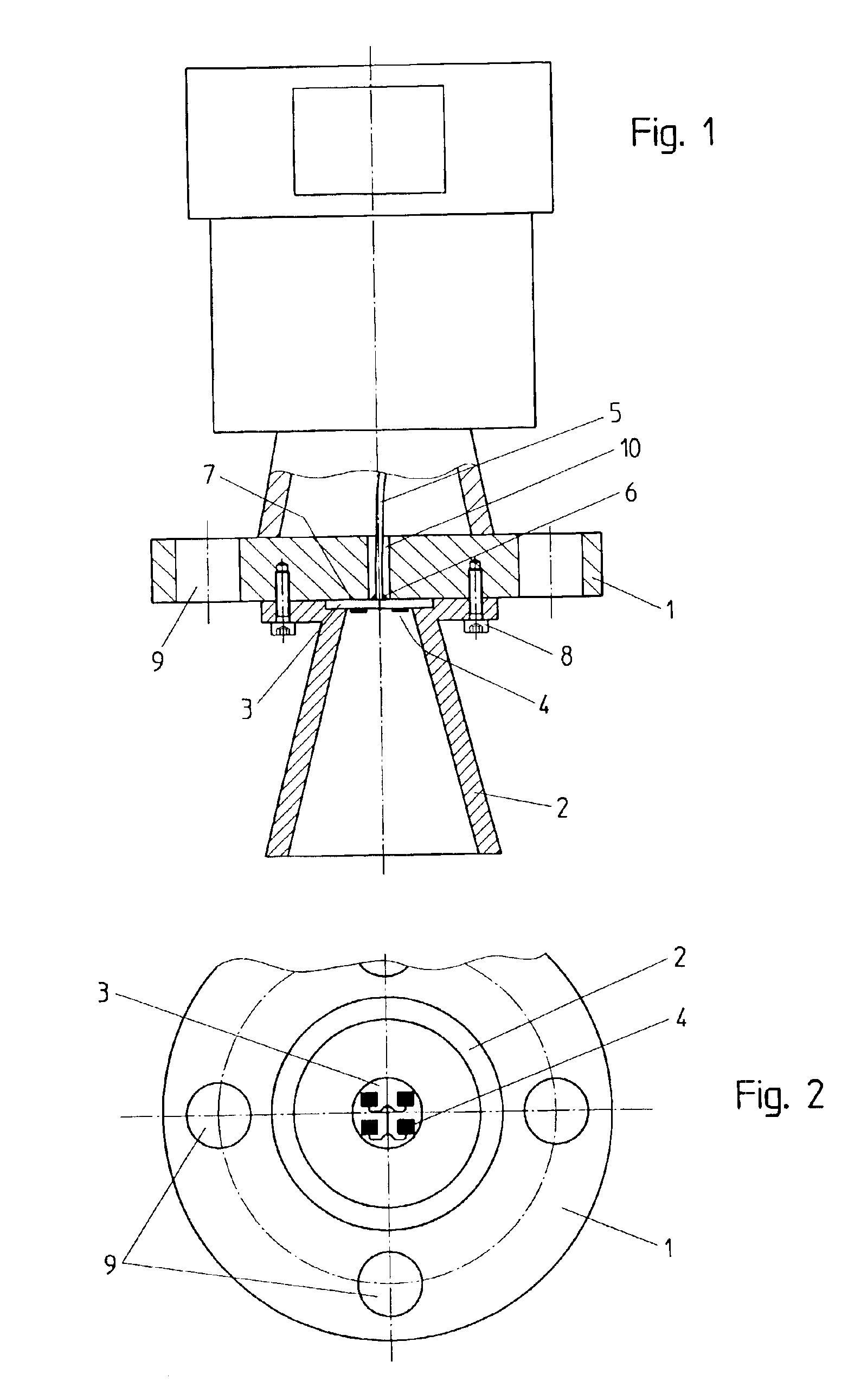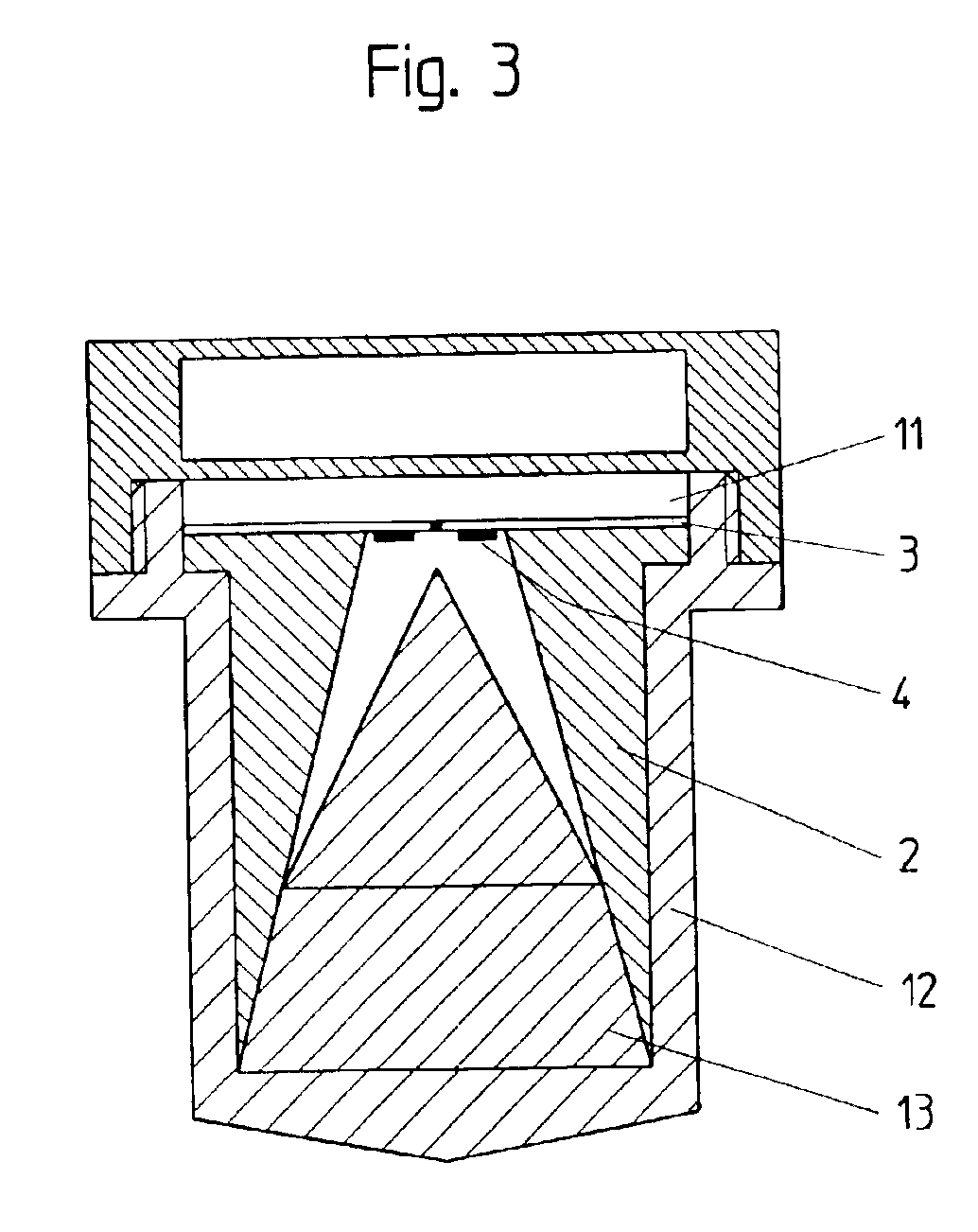Antenna system for a level measurement apparatus
a level measurement and antenna system technology, applied in the direction of antennas, engine lubrication, liquid/fluent solid measurement, etc., can solve the problems of large constructional space, large system size, and difficulty in exact matching of waveguide dimensions to the transmission frequency range of microwave signals, so as to reduce the constructional length reduce the size of the antenna system, and reduce the effect of wave propagation angl
- Summary
- Abstract
- Description
- Claims
- Application Information
AI Technical Summary
Benefits of technology
Problems solved by technology
Method used
Image
Examples
Embodiment Construction
[0040]FIG. 1 is a longitudinal cut through an inventive antenna system. The antenna system is comprised of a metallic flange 1, which is provided with a plurality of bores 9. The bores 9 serve for receiving screws by means of which the antenna system is to be attached on a receptacle or storage tank (not shown) having an aperture through which the metallic antenna horn 2 protrudes into the inner receptacle space. The bores 9, for this purpose, have to find their continuation in corresponding bores in the receptacle wall, so as to allow the antenna system to be screwed with the receptacle. Moreover, flange 1 has a further bore 10 in its center, through which a coaxial cable 5 is guided. Below flange 1 of the antenna system, an antenna horn 2 is attached with screws 8.
[0041]The antenna horn 2 is fixed on flange 1 in such a manner that the center axis of the antenna horn 2 is coaxial to the center axis of bore 10. Antenna horn 2 features a recess at the front side of its small funnel o...
PUM
 Login to View More
Login to View More Abstract
Description
Claims
Application Information
 Login to View More
Login to View More - R&D
- Intellectual Property
- Life Sciences
- Materials
- Tech Scout
- Unparalleled Data Quality
- Higher Quality Content
- 60% Fewer Hallucinations
Browse by: Latest US Patents, China's latest patents, Technical Efficacy Thesaurus, Application Domain, Technology Topic, Popular Technical Reports.
© 2025 PatSnap. All rights reserved.Legal|Privacy policy|Modern Slavery Act Transparency Statement|Sitemap|About US| Contact US: help@patsnap.com



